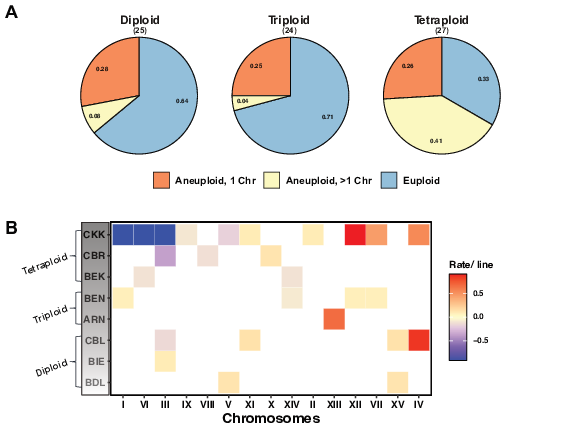Loss of heterozygosity spectrum depends on ploidy level in natural yeast populations.
Abhishek Dutta, Fabien Dutreux, Joseph Schacherer.
Molecular Biology and Evolution. 2022. doi:10.1093/molbev/msac214
The appearance of genomic variations such as loss of heterozygosity (LOH) has a significant impact on phenotypic diversity observed in a population. Recent large-scale yeast population genomic surveys have shown a high frequency of these events in natural isolates and more particularly in polyploids. However, the frequency, extent, and spectrum of LOH in polyploid organisms have never been explored and is poorly characterized to date. Here, we accumulated 5,163 LOH events over 1,875 generations in 76 mutation accumulation (MA) lines comprising nine natural heterozygous diploid, triploid, and tetraploid natural S. cerevisiae isolates from different ecological and geographical origins. We found that the rate and spectrum of LOH are variable across ploidy levels. Of the total accumulated LOH events, 8.5%, 21%, and 70.5% of them were found in diploid, triploid, and tetraploid MA lines, respectively. Our results clearly shows that the frequency of generated LOH events increases with ploidy level. In fact, the cumulative LOH rates were estimated to be 9.3×10−3, 2.2×10−2, and 8.4×10−2 events per division for diploids, triploids, and tetraploids, respectively. In addition, a clear bias towards the accumulation of interstitial and short LOH tracts is observed in triploids and tetraploids compared to diploids. The variation of the frequency and spectrum of LOH events across ploidy level could be related to the genomic instability, characterizing higher ploidy isolates.

